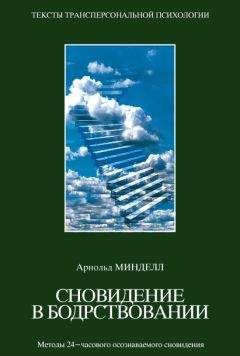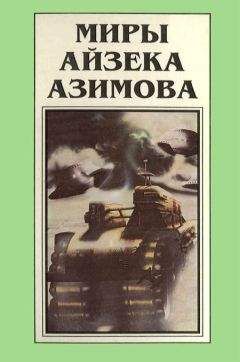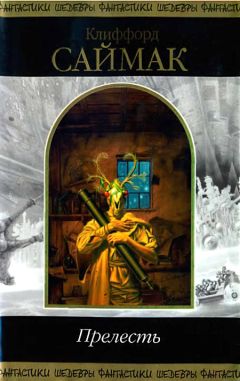Теперь исследуйте эти заигрывания. Как они связаны между собой? Каков узор, скрывающийся за всеми этими точками, этими заигрываниями? Картина, развертывающаяся за каждой вещью, привлекающей ваше внимание, и внутри ее – это ваш двойник, изображение вашего Большого «Я». Начните соединять точки, различные моменты заигрывания, и вот он ВЫ!
Все, что вы замечаете – это точки в очертаниях вашего Большого «Я», – и те гигантские события, которые вспыхивают молниями из темноты ночи, пробуждая вас к своему присутствию, и те крохотные вещи, что лишь на мгновенье мелькают огоньками перед ваши вниманием, прежде чем кануть в забвение. Видеть всю свою Самость забавно; это почти детская игра.
Если вы маргинализируете чувственный опыт, то считаете себя нормальным человеком. Если вы его не маргинализируете, другие могут называть вас мистиком. И повседневный человек, и мистик – это ВАШИ лица. Все, на что вы смотрите – это ВЫ, простирающийся в пространстве и времени. Если вы не маргинализируете чувственный опыт, то видите лик Бога, даже когда смотритесь в зеркало.
Вот он ВЫ, скрытый за точками.Для вашего маленького «я» это верно только в отдельные моменты. Вселенная кажется такой живой и постоянно меняющейся, заставляя пугаться ваше и мое маленькое «я». В обычных состояниях ума вы и я боимся этой вселенной и стремимся защитить себя от ее ужасающей силы. Вы и я цепляемся за свои имена и отказываемся знать, что люди и события, которые нас расстраивают – это лицо в зеркале.
Исследование темной стороны луны
Использование осознаваемости для исследования темной стороны луны открывает невероятную картину: все люди, кого вы ненавидели и любили, те, кто живы, и те, кто умерли – это ВЫ. Оно показывает, что вы можете говорить «прощай» только тому, чью сущность вы маргинализировали.
Истина состоит в том, что никакую проблему взаимоотношений, касается ли она любви или ненависти, жизни или смерти, никогда нельзя полностью разрешить без осознаваемости чувственного опыта, без 24-часового Осознаваемого Сновидения. Когда вы обладаете осознаваемостью, то знаете, что находитесь на обеих сторонах, на всех сторонах взаимоотношений.
Когда вы, по крайней мере, на мгновение достигаете осознаваемости, то можете наслаждаться Сновидением, источником реальности. И вы также наслаждаетесь тем ужасающим и захватывающим разнообразием, той реальностью контрастов, которая зовется этим миром.
Узелки на память
Чтобы познать свою Самость, неситесь вскачь и обнаруживайте, что стоите совершенно неподвижно.
Наслаждайтесь чувственным опытом и благословляйте того, кто Это маргинализирует.
Забывайте и вспоминайте; ВЫ – это светлая и темная стороны луны, дерево и ветер, монета и неизвестное, подбрасывающее ее.
Barks, Coleman, and Michael Green. The Illuminated Rumi. New York: Broadway Books, Bantam. 1996.
Bhikkhu, Thanissaro. Unentangled Knowing: The Teaching of a Thai Buddhist Lay Woman. Barre, MA: Dhamma Dana Publications. 1995.
Bulkeley, Kelly. Among All These Dreamers. Albany, N. Y: State University of New York Press. 1996.
Castaneda, Carlos. Journey to Ixtlan: The Lessons of Don Juan. New York: Simon and Shuster. 1972.
Chuang Tsu. Translated by Gia-Fue Feng and Jane English. New York: Vintage Books. 1974.
Coxhead, David, and Susan Hiller. Dreams, Visions of the Night. London: Thames and Hudson. 1975.
Dalai Lama. Sleeping, Dreaming, and Dying. Boston: Wisdom Publications. 1997.
Eckhart, Meister. Everything as Divine: The Wisdom of Meister Eckhart. Translated by Edmund Colledge and Bernard McGinn. New York: Paulist Press. 1996.
Eliade, Mircea. Yoga, Immortality and Freedom. Translated by Willard Trask. Bollingen Series LVI. Princeton, N. J.: Princeton University Press. 1969.
Evans-Wentz, W. Y. Tibetan Yoga and Secret Doctrines. New York: Oxford University Press. 1958.
Freud, Sigmund. The Interpretation of Dreams. New York: Basic Books. 1953.
Garfield, Patricia. The Dream Messenger: How Dreams of the Departed Bring Healing Gifts. New York: Simon and Schuster. 1997.
–. The Healing Power of Dreams. New York: Simon and Schuster. 1991.
Goodbread, Joseph. Radical Intercourse. Portland, Oreg.: Lao Tsu Press. 1997.
Govinda, A. B. The Psychological Attitude of Early Buddhist Philosophy. Delhi: Nag Publishers. 1975.
Griffiths, P. J. Being Mindless; Buddhist Meditation and the Mind-Body Problem. La Salle, Ill.: Open Court. 1986.
Guenther, H. V. Tibetan Buddhism in Western Perspective: Collected Articles of Herbert V. Guenther. Delhi: Dharma Publishing. 1989.
Hanh, Thich Naht. The Heart of the Buddha's Teachings: Transforming Suffering into Peace, Joy, and Liberation: The Four Noble Truths, The Noble Eight Fold Path, and Other Basic Buddhist Teachings. Berkeley, Calif: Parallax Press. 1998.
–. Please Call Me by My True Names. Berkeley, Calif: Parallax Press. 1993.
Hilevi, ben Shimon. Kabbalah, Tradition of Hidden Knowledge. London: Thames and Hudson. 1979.
Jung, Carl. The Collected Works. 2d ed., vol. 8. The Structure and Dynamics of the Psyche. Princeton, N. J.: Princeton University Press. 1969.
–. The Collected Works, vol. 14. Psychology and Alchemy.
Princeton N. J.: Princeton University Press. 1970.
Kaplan-Williams, Stephen. Exploring the World of Lucid Dreaming. New York: Ballantine. 1992.
Krippner, Stanley, and Joseph Dillard. Dreamworking: How to Use Your Dreams for Creative Problem Solving. New York: Bearly Limited. 1988.
La Berge, Stephen. Lucid Dreaming: The Power of Being Awake and Aware in Your Dreams. New York: Jeremy Tarcher. 1985.
Lancaster, B. L. «The Mythology of Anata.» In The Authenticity Of Experience, edited by J. Pickering. Richmond, Surrey, UK: Curzon Press. 1998.
–. «The Stages of Perception: Towards a Synthesis of Cognitive Neuroscience and the Buddhist Abhidhamma Tradition.» Journal of Consciousness Studies, 4, no. 2 (1997).
Lao Tzu. Tao Те Ching: The Book of Meaning and Life. Translation and Commentary by Richard Wilhelm, translated into English by H. G. Ostwald. New York: Arkana-Penguin. 1986.
Lawlor, Robert. Voice of the First Day, Awakening in the Aboriginal Dreamtime. Rochester, Vt: Inner Traditions International. 1991.
Mathews, John, consulting ed. The World Atlas of Divination. Boston: Bulfinch Press. 1992.
Mbiti, John. African Religions and Philosophy. 2d ed. Reprint. Oxford, UK: Heinemann Publishers. 1997.
Mindell, Amy. Metaskills, the Spiritual Art of Therapy. Tempe, Ariz.: New Falcon Press. 1994.
–. Coma: A Guide for Friends and Helpers. Portland, Oreg.:
Lao Tsu Press. 1999.
Mindell, Arnold. Dreambody: The Body's Role in Revealing the Self. Portland, Oreg.: Lao Tsu Press. 1998.
–. Working with the Dreaming Body. London: Penguin-Arkana. 1984.
–. River's Way: The Process Science of the Dream-body.
London: Penguin. 1985.
–. The Dreambody in Relationships. New York: Penguin. 1986.
–. City Shadows, Psychological Interventions in Psychiatry. New York: Penguin. 1987.
–. Coma, Key to Awakening, Working with the Dreambody near Death. New York: Shambhala/Penguin-Arkana. 1988.
–. Inner Dreambodywork: Working on Yourself Alone. New York: Penguin. 1989.
–. The Year I: Global Process Work with Planetary Tensions.
New York: Penguin-Arkana. 1990.
–. The Leader as Martial Artist: An Introduction to Deep Democracy, Techniques and Strategies for Resolving Conflict and Creating Community. San Francisco: HarperCollins. 1992.
–. The Shaman's Body: A New Shamanism for Health, Relationships and Community. San Francisco: HarperCollins. 1994.
–. Sitting in the Fire: Large Group Transformation through Diversity and Conflict. Portland, Oreg.: Lao Tsu Press. 1995.
–. Quantum Mind: The Edge between Physics and Psychology.
Portland, Oreg.: Lao Tsu Press. 1999.
–, with Amy Mindell. Riding the Horse Backwards: Process Work in Theory and Practice. New York: Penguin. 1992.
Monroe, Robert. Journey out of the Body: Ultimate Journey. New York: Doubleday. 1994.




